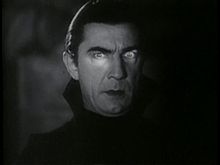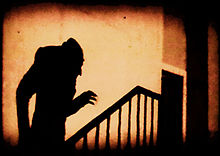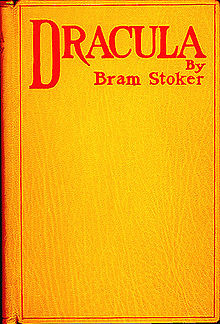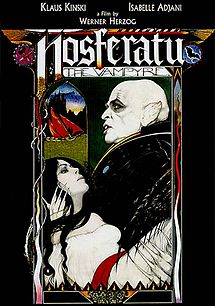English 477: The Vampire in Folklore, Literature, and Film
General Course Information

Instructor: Dr. Robert S.
Carlisle
Section: (1) from January 04 to March 14, 2016
Email Address: rcarlisle@csub.edu
Required
Texts
Dundes, A. (Ed.). (1998).� The Vampire: A Casebook. �Madison, WI: The University of Wisconsin Press
(ISBN: 0-299-15924-8).
Perkowski, J. (2006).� Vampire Lore:� From the Writings of Jan Perkowski.� Bloomington, IN:� Slavica
Publishers.� (ISBN: 0-89357-331-0).
Stoker,
B. (2002).� Dracula.� Boston:�
Bedford/St. Martin�s.� (ISBN:� 978-0-312-24170-4).
Recommended Text
Barber,
Paul.� (1988). Vampires, Burial, and Death.� New Haven:�
Yale University Press.�
(ISBN:� 0-300-04859-9).
Other
readings that the students will be able to get free online.
Purchasing Textbooks
Students may purchase textbooks at The Runner Bookstore on the campus of California State University. Students may also call The Runner Bookstore at (661) 654-3490 and order their books over the phone. The books are also available from amazon.com and directly from the publishers
Prerequisites
The prerequisites for ENGL 477 are English 101 or the equivalent or one course from ENGL 205, 207, 208, 272, 290, 294, or 295, or permission of the instructor.
Accessibility
"California
State University, Bakersfield is committed to providing equal access to
Web-based information
for people with disabilities. This is in accordance with Section 504 of the
1973 Rehabilitation Act, Section 508
of the Rehabilitation Act Amendment of 1998 and the 1990 Americans with
Disabilities Act, and Executive Order 926 of
California State University."
To achieve the goal of universal accessibility, CSUB uses Blackboard as its Learning Management System (LMS), the first LMS to receive the Non-visual Accessibility Gold Certification by The National Federation of the Blind. Students can read more about Blackboard's guarantee of accessibility and its accessibility programs at its website.
Technical Support
For the most part, students will not need any special programs to view the content of the class or complete assignments. Students will need to view several YouTube videos and one MP4 video, meaning that students will need a media player to view the latter. If students have difficulty with the content of the class, they need to contact the instructor, preferably using the 'Discussion Board' so that other students can see both the question and the answer.
If students have any technical problems with Blackboard, then they need to contact the Blackboard Help Desk, either by telephone (661) 654-2315 or by email lmssupport@csub.edu. Students may also go to the E-Learning Services Building on the east side of the Walter Stiern Library.
Course Description

English 477 is divided into three major sections:� the vampire in folklore, the vampire in literature, and the vampire in film.� The first section of the class begins with an introduction to folklore and continues with the students discovering the folkloric motifs involving the vampire.� In the first section, students will also learn about the great vampire epidemic of the 18th century, the classification of vampires, �historical� vampires, corpse medicine, the decomposition of corpses, and the possible psychological, social, and religious reasons leading to beliefs in vampires�in other words, we�re going to have a bloody good time.�
In the second and third sections of the class, we will continue to examine the vampire motifs and compare the ones in literature and film with those is folklore.� Students will also study vampire literature and film as Gothic entertainment.� In the second section of the class, students will read the following 19th century works:

� The Vampyre by John William Polidori
� Select chapters from Varney the Vampire by James Malcolm Rymer
� Carmilla by Joseph Sheridan Le Fanu.
� Dracula by Bram Stoker
During the second section of the class a guest lecturer will join us, Jessica Wojtysiak, who has considerable expertise in Dracula.
In the third section of the course, we will be seeing four films in class:

� Nosferatu (1922)
� Dracula (1931)
� Nosferatu: The Vampyre (1979)
� Bram Stoker�s Dracula (1992)
� One mystery movie to be announced
Though the last two sections of the class have some required readings and films, students will also be able to select other readings and films that particularly interest them.� I ask all students to read at least one modern vampire novel to identify the motifs and to view at least one additional film for the same reason.
Pretest
All students in English 477 must complete a pretest.� Though the pretest does not count as part of the students� final grades, it is a requirement, allowing the instructors to measure academic gains during the quarter.�� The pretest is online and will be available to students from 9:00 a.m. on January 04 to 10:00 p.m. on January 10.� Students should enjoy the pretest because it will allow them to realize how much they know about vampires before studying the content of the class.
Evaluation
Students must complete three requirements for the course. First, they are required to participate in three blogs where they will insert motifs (narrative elements) about vampires in folklore, literature and film.� Each major section of the class has one blog consisting of six broad categories of motifs and students must insert five specific examples in each category.� During the first week of class, the instructors will provide explicit instructions for how to enter the motifs into the blogs.� As illustrated in the table below, each blog is worth 15% of the final grade, for a total of 30% given that there are three blogs.� Students must complete the blogs by certain dates, which are found in the schedule.�
The second requirement is for students to write a term paper on a topic of their choice.� The instructors have provided some suggested� Topics for the Term Paper and Instructions for writing the term papers are also available.� As discussed in the instructions for writing term papers, students may co-author papers.� The grades on term papers constitute 30% of the final grade.
The final requirement is the completion of a comprehensive objective examination. The exam will cover all the textbooks and the few online readings found in Blackboard. Study questions for the test are available in Bb, and because they are very similar to actual questions on the final, students should complete all of them.
The final exam will be held in a computer lab on campus.� Details on where students take the final examination will be released later in the quarter. Students will be able to see their grades for the final examination once the period of accessibility has expired.
The final grade will be calculated according to the following schema.
|
Evaluation Task |
Percentage of Grade |
Deadlines |
|
Folklore Blog |
15% |
January 28 |
|
Literature Blog |
15% |
February 25 |
|
Film Blog |
15% |
March 14 |
|
Bibliography |
05% |
March 07 |
|
Term paper |
30% |
March 11 |
|
Final Exam |
20% |
TBA |
Grading Policy
We will assign final grades according to the following schema:
|
The final average will be calculated by averaging the grades of the three requirements discussed above.
Communicating with Other Students and the Instructor
Students can communicate with one another by using the Discussion Topics, Mail, and Chat functions in the Communications folder in Blackboard.� When writing any questions or comments, students are expected to follow the rules of netiquette by avoiding profanity, sarcasm, and ridicule.� All entries under Discussion Topics are public, and students should place all questions about course content in the appropriate folder in Discussion Topics.� If students do not answer a question posted by another student within 24 hours, the instructor will reply.� Postings in Mail are private, and by using this feature, students may communicate with one another without fear of anyone else viewing what has been written.� Students may also communicate privately with one another using the Chat function, which the instructor with never enter.
To communicate with the instructor, students should use Mail within Blackboard, not the instructor�s campus email account.� The instructor makes a dedicated effort to respond to all student email inquiries within 24 hours.
Getting to the Course
The course is located on a CSUB server running Blackboard, the web-based teaching software used to design the course. To get into Blackboard, students need a userid and a password, which they should already know. Students will be able to enroll into their appropriate section of English 477 a week before classes begin. The instructor will send out an email message with the enrollment code on it.
Important University Dates
January 25, 2016: Last date to withdraw without a "W" being
recorded.
February 22, 2016: Last date to withdraw for a serious and compelling reason.